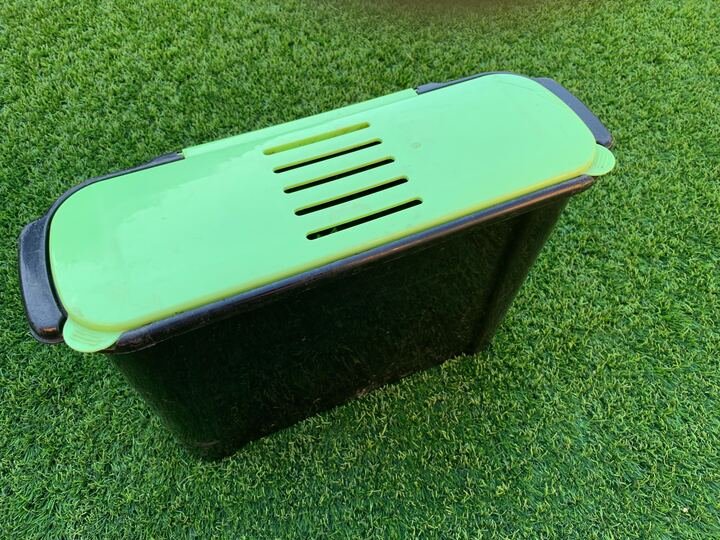Reducing our Footprint
Test #2 - If you buy it. Eat it! Don’t waste food
According to the United Nations’ World Food Programme in 2022:
The world faces a global hunger crisis of unprecedented proportions. In just two years, the number of people facing, or at risk of, acute food insecurity increased from 135 million in 53 countries pre-pandemic, to 345 million in 82 countries today.
Fuelled by conflict, climate shocks and COVID-19, the crisis is escalating as the war in Ukraine drives up the costs of food, fuel and fertilizers. Millions of people are struggling to put food on the table and are being driven closer to starvation in a storm of staggering proportions.
We are at a critical crossroads. We need to rise to the challenge of meeting people's immediate food needs, while at the same time supporting programmes that build long-term resilience. The alternative is hunger on a catastrophic scale.
According to the Foodbank Hunger Report 2022:
On any given day, over half a million households in Australia are struggling to put food on the table, and disturbingly, those with children are being hardest hit. More than 2 million households in Australia have run out of food in the last year due to limited finances, sometimes skipping meals or going whole days without eating. This has meant that 1.3 million children lived in food insecure households during that time.
Assumptions that this is affecting only those who are unemployed or homeless are incorrect with the research showing that over half of food insecure households had someone in paid work and a third of households with mortgages have experienced food insecurity.
According to OZHARVEST in Australia:
We waste 7.6 million tonnes of food each year, 70% of this is perfectly edible. Food waste costs our economy $36.6 billion a year. Food waste costs households $2,000 - $2,500 per year. More than 25 million hectares of land is wasted to grow food that is not eaten. The top five most wasted foods in Australia are vegetables, bread, fruit, bagged salad, and leftovers. Globally up to 10% of global greenhouse gases comes from food that is produced, but not eaten.
Wasting food is unconscionable but most of us do it.
What can you do to stop wasting food?
Do a quick stocktake of the cupboards, the fridge and the freezer and see what is lurking in their dark depths before you go shopping
Divide food into what needs to be eaten as soon as possible, what needs to be eaten in the next fortnight, what will last for some months and what will last for ages. At the same time, make sure you use some of the long-lasting food in every meal. Herbs and spices eventually lose much of their flavour, sauces crust over, nuts and oils become rancid, jams get mouldy, pickles go cloudy, frozen food eventually develops ice crystals: so, use them before they get to this sorry state.
Remember, best-by-dates are recommendations only - food is not perfectly edible one day and then inedible the next. Have a good look at it, especially its texture and give it a good smell, it could well be quite edible. But if in doubt recycle it.
Vacuum seal as much of your dried food as you can using an inexpensive food vacuum sealer. Grains and seeds will keep for ages if they are vacuum packed.
Store nuts and coffee in the freezer or fridge.
Let what you have at home dictate what meals you prepare. Don’t plan every meal, leave some days free for using leftovers or impromptu eating out;
Eat seasonal produce if you can, it will most likely have less food miles attached to it and be in peak condition. Learn how to cook some classic basic dishes so you can adapt them to accommodate what you have available
Don’t buy so much food. We tend to overestimate how much food we need for out meals. Adjust recipes to suit the number of people you are serving and to take account of what else is being served at the meal.
What we offer people at mealtimes is often seen as a sign of how much we love them or how generous we are. If this is the case in your household, then don’t serve everything at once. Keep some back for second helpings and make sure it is looked after properly to avoid contamination so that if everyone has had enough the leftovers can be used for another meal.
If you can’t re-use food, recycle it by setting up a worm farm, digging it into the ground, or making a compost heap.
A worm farm is an easy option to manage certain organic food scraps!
You can keep a bucket for your food scraps that fits under the sink and is wide enough to scrape a cutting board of scraps into.
Once a week, lift the lid on the worms and tip in the scraps, then pour a watering can full of water over them.
When you are ready to fertilise your plants, open the drainage tap and collect the worm wee. Your plants will love it!



